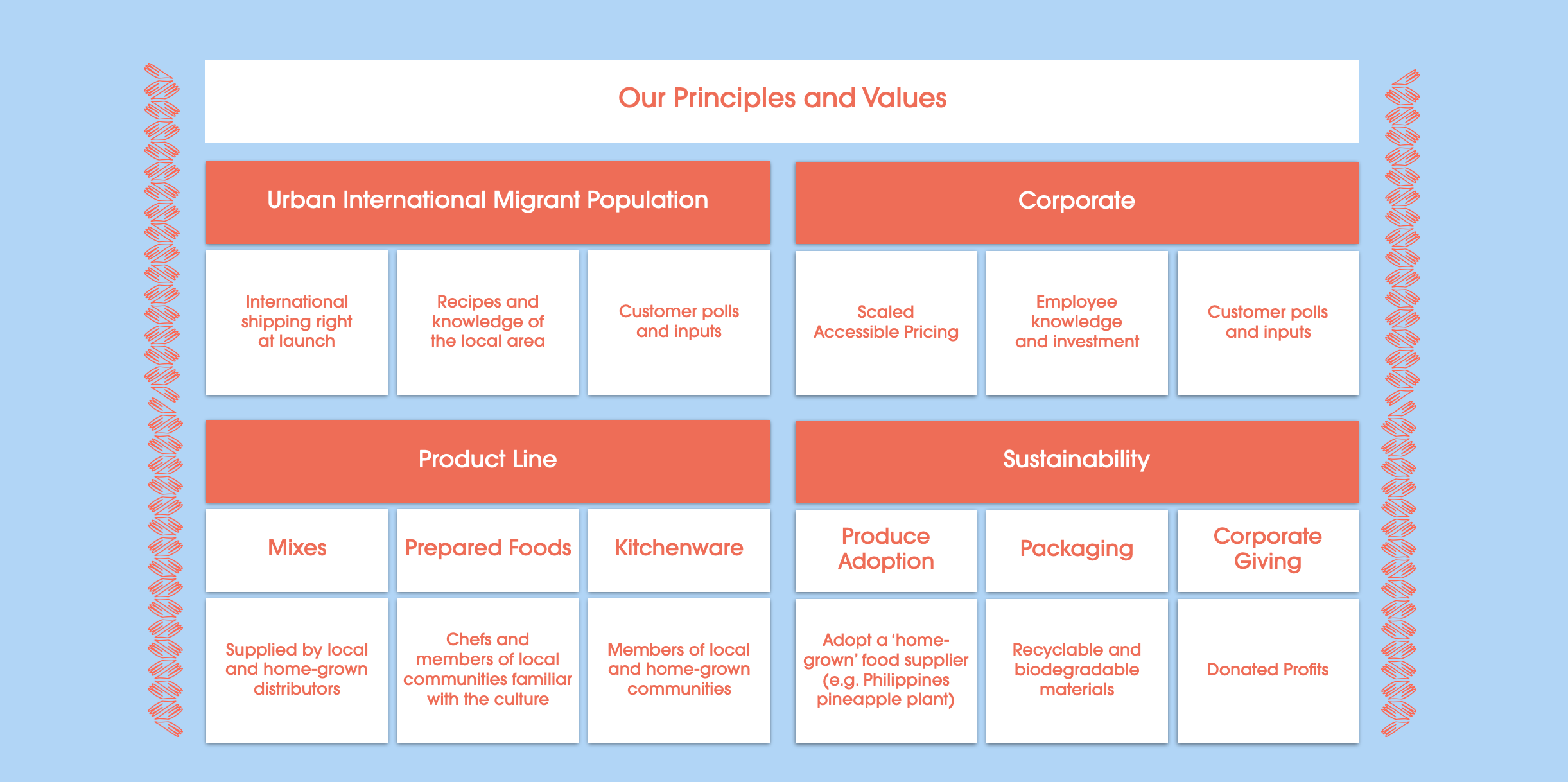SARAPOSO: Serving Up 'Home-Culture' Cuisine
"How can international migrants gain greater access to food from their home cultures in their transplanted urban environments?"
SARAPOSO is a speculative company that increases access for international migrants to source, cook, and eat from their 'home' cultures while residing in a new locale. First-year student—and self-described urban international migrant—Margarita Zulueta was inspired to create SARAPOSO based on her own experiences.
"My parents are Filipino and Spanish-Filipino," Margarita shares, "but since I was two-days-old, I have been continuously moving to different urban centers around the world—places such as Manila, Hong Kong, Kobe, and New York. From each move, I cherish many food memories of my family's excitement when we discovered or got access to food from the Philippines…which happened pretty rarely."
The name SARAPOSO is an homage to Margarita's home cultures as it is a hybrid of "delicious" in both Tagalog and Spanish: Sarap and Delicioso.
Margarita acknowledges the importance of having access to home food to feel more comfortable in a new location and says she developed SARAPOSO as a way to fill that need. The name SARAPOSO is also an homage to Margarita's home cultures as it is a hybrid of "delicious" in both Tagalog and Spanish: Sarap and Delicioso, respectively.
SARAPOSO's initial launch includes three product lines of prepared food and starter mixes that users can purchase (Filipinx, Indian, and Mexican). With each order, SARAPOSO buyers receive a recommendation guide showing where to eat out or buy foods from their home culture in the local area. The guide serves to help users see where they can connect with their home culture's local food community outside the home and get to know their new area better.
With each purchase, SARAPOSO also focuses on supporting the home cultures of its buyers. Remittance support opportunities are created through non-profit donations and the 'adopt a produce grower' purchase option to maintain sustainable farms in customers' home-cultures. By connecting the dots between local food suppliers and international migrants, SARAPOSO hopes to create stronger communities through a shared love of food.
Margarita said that SARAPOSO started with investigating her personal experience which led to her secondary research focusing on immigrants globally and historical diasporas. "I began by thinking about my own food story and my positionality within the food space—what problems had I encountered, and what was a common thread in my food life. Once I realized my food story is heavily tied to migration, I began to develop the idea to serve international migrants."
International migrants make up 20% of metropolitan areas globally, and the majority of that population lives in around 20 major urban centers worldwide. In 2019, there were 272 million international migrants, with a potential market increase of 66 million who were planning on moving out of their home countries.
International migrants make up 20% of metropolitan areas globally,
and the majority of that population lives in around 20 major urban centers worldwide.
In New York City alone, there are 4.4 million immigrants, which account for 20% of the city's population. The majority come from the Dominican Republic, followed by China, Mexico, and Jamaica, but even that is a small percentage of the city's immigrant population.
Through her research, Margarita realized there was a vast market potential to tap into connecting international migrants with their home food by directly presenting food options to consumers. "I looked at what other similar companies were doing in that space and realized that my value proposition is to facilitate opportunities for restaurants and local food suppliers to connect to newer customers who would be interested in their products."
Margarita designed SARAPOSO during the first-semester course, Design for Sustainability and Resilience, taught by Suma Reddy. “A key highlight was thinking through all the facets of what a company could look like,” Margarita shares of her experience. “The thought process felt pretty freeing in that I could throw all of my big ideas into an organizational structure and then figure out the logistics of how it would work. I would like to start my own company in the future, and this project helped me see how the start of that process could look like from an ideation perspective.”







